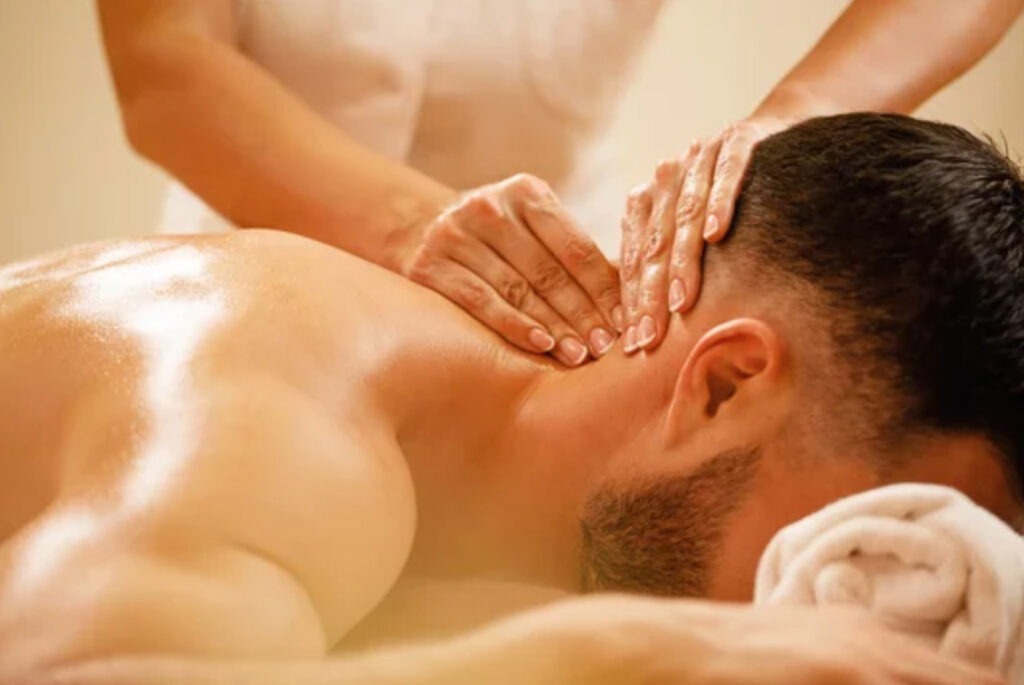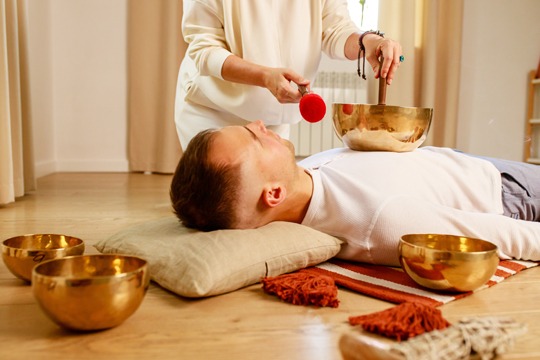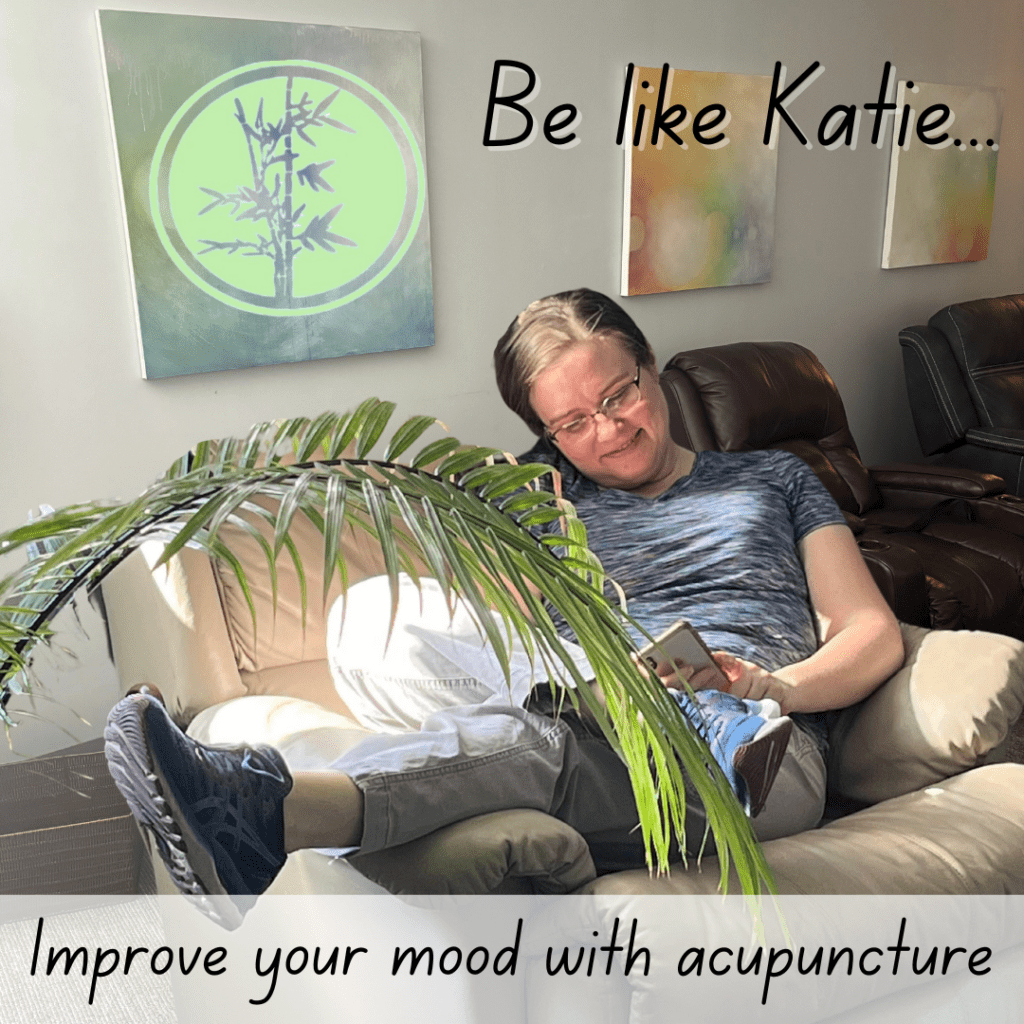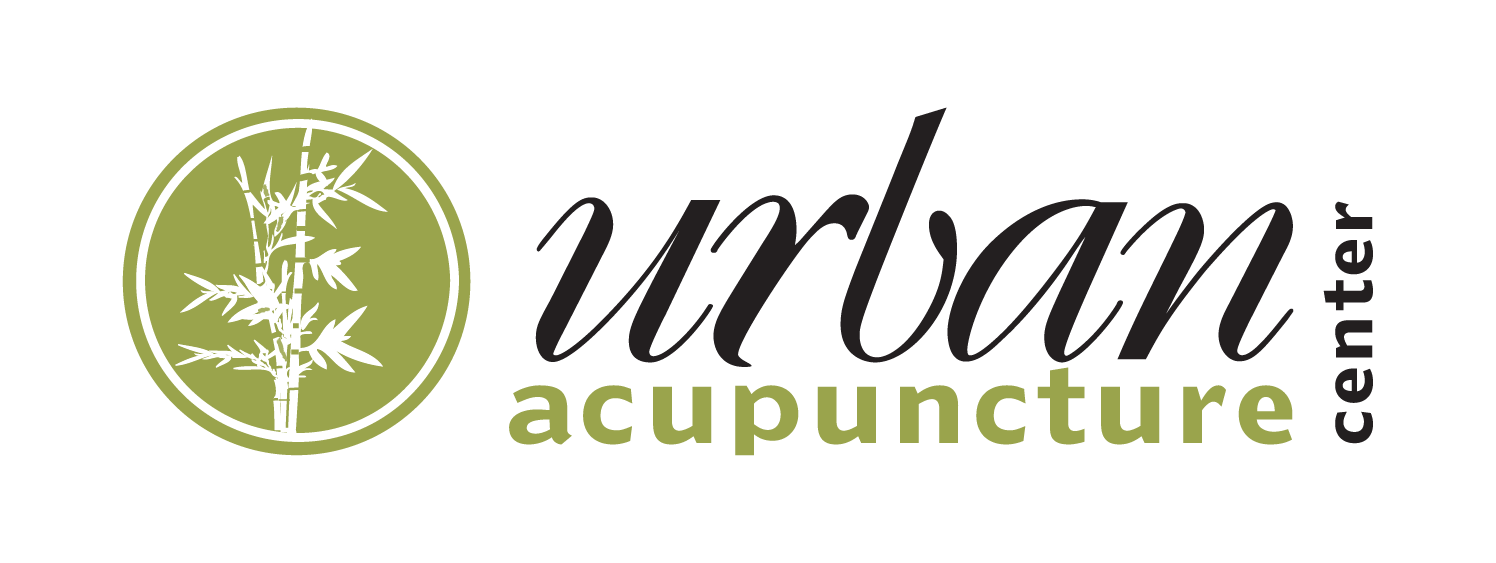by urban-acupuncture | Jun 1, 2025 | Holistic Health, Treatments
Ways Herbal Medicines Affect the Immune System
 Herbal medicines can impact the immune system in cancer patients by acting as immunomodulators, which means they can enhance, restore, or modify the immune response. This is crucial in cancer treatment, as cancer often evades immune surveillance due to its low immunogenicity. Here are some ways herbal medicines affect the immune system:
Herbal medicines can impact the immune system in cancer patients by acting as immunomodulators, which means they can enhance, restore, or modify the immune response. This is crucial in cancer treatment, as cancer often evades immune surveillance due to its low immunogenicity. Here are some ways herbal medicines affect the immune system:
Impact of Herbal Medicines on the Immune System
- Immunomodulation
Herbal medicines like Ganoderma lucidum (reishi mushroom), Sophora flavescens, and Scutellaria baicalensis have been shown to stimulate the immune system by activating macrophages, T lymphocytes, and natural killer (NK) cells. These cells play a key role in recognizing and eliminating cancer cells.
- Enhancing Innate Immunity
Herbs such as Astragalus membranaceus and Panax ginseng are known to increase white blood cell counts, which can help restore immune function in cancer patients. This is particularly important during chemotherapy, which can suppress the immune system.
- Regulation of Tumor Microenvironment (TME)
Some herbal compounds can regulate the TME by exhibiting anti-inflammatory and cytotoxic effects on tumors. This regulation helps in creating an environment unfavorable for cancer growth and progression.
- Adjuvant Effects
Herbal medicines can also enhance the sensitivity of cancer cells to chemotherapy, potentially improving treatment outcomes. For example, certain herbs may increase the effectiveness of chemotherapeutic agents by modulating immune responses.
- Safety Considerations
While herbal medicines are generally considered natural and safe, they can interact with conventional treatments or have side effects, especially in high doses or with prolonged use. It’s essential for cancer patients to consult healthcare providers before using herbal remedies.
Several herbal remedies have shown promise in cancer treatment, although they are generally used as complementary therapies rather than replacements for conventional treatments. Here are some of the most promising herbal remedies:
Promising Herbal Remedies for Cancer Treatment
- Turmeric/Curcumin
Turmeric contains curcumin, which has been shown to inhibit the growth of cancer cells and exhibit anti-inflammatory and antioxidant properties. It is used for both cancer prevention and treatment.
- Ginger
Ginger has anti-inflammatory and anti-cancer effects in lab studies. It is particularly effective in reducing chemotherapy-related nausea and vomiting.
- Astragalus
Astragalus may reduce the side effects of chemotherapy, such as nausea and fatigue, and improve quality of life for cancer patients. It is often used in combination with conventional treatments.
- Dong Quai
Traditionally used in Chinese medicine, dong quai may offer protective effects against heart damage caused by certain chemotherapy drugs. However, its safety and efficacy for cancer treatment need further research.
- Moringa Tree
Moringa has been shown to kill ovarian cancer cells in test tube studies and may help alleviate symptoms such as difficulty breathing and joint pain.
- Berberine
This compound, found in plants like goldenseal and barberry, has shown promise in fighting lung cancer in laboratory experiments.
- Essiac Tea
While not proven to cure cancer, Essiac tea contains antioxidants that may help manage symptoms and support overall health.
- Ginseng
Ginseng is believed to reduce inflammation and tumor growth and protect healthy cells from damage. It is often used to mitigate chemotherapy side effects.
- Centella Asiatica (Gotu Kola)
This herb has shown potential as an anticancer agent by inhibiting tumor cell proliferation in animal studies.
- Phyllanthus amarus
Known for its antitumor effects, this plant may inhibit carcinogenic compound activation and induce cell cycle arrest.
While these herbal remedies show promise, it’s crucial to consult with healthcare providers before using them, as they may interact with conventional treatments or have side effects.
Learn More About Herbal Therapy at UAC…
Contact Urban Acupuncture Center in Columbus, OH For More Information
For more information about how acupuncture, massage therapy, electroacupuncture and other alternative healing treatments can help you, please contact the Urban Acupuncture Center Board Certified Licensed Acupuncturist’s team at Indianola Ave, Columbus, Ohio (Clintonville) (614) 725-2488 or click here. Taking new patients in and around greater Columbus, Ohio.
by urban-acupuncture | May 1, 2025 | Holistic Health, Treatments
What is Herbal Medicine Therapy?
 Herbal medicine, also known as botanical medicine or phytomedicine, involves using plants or plant extracts like seeds, berries, roots, leaves, bark, or flowers to treat illnesses and enhance overall health. It has ancient origins and is used to prevent or cure disease, relieve symptoms, boost energy, relax, or lose weight.
Herbal medicine, also known as botanical medicine or phytomedicine, involves using plants or plant extracts like seeds, berries, roots, leaves, bark, or flowers to treat illnesses and enhance overall health. It has ancient origins and is used to prevent or cure disease, relieve symptoms, boost energy, relax, or lose weight.
- How it works Herbal medicine aims to restore the body so it can protect, regulate, and heal itself, taking a whole-body approach that considers physical, mental, and emotional well-being.
- Forms Herbal supplements are available in various forms, including tablets, capsules, powders, teas, extracts, and fresh or dried plants. They can be swallowed as pills, brewed as tea, used on the skin as gels or creams, or added to bath water.
- Regulation Herbal remedies are a type of dietary supplement but are not regulated or tested like medicines.
- Western herbal medicine Focuses on treating the whole person, considering their health history, family history, diet, and lifestyle, and commonly uses European and North American herbs.
- Traditional Chinese Medicine (TCM) Uses hundreds of medicinal substances from plants, combining different plant parts into teas, capsules, tinctures, or powders.
Common Herbs Used and Their Potential Benefits:
- Chamomile: Used as a remedy for nausea and upper respiratory infections.
- Dong quai: Used for gynecological complaints such as premenstrual tension, menopause symptoms, and period pain.
- Echinacea: Used to stimulate the immune system and aid the body in fighting infection.
- Elderberry: Primarily marketed as a treatment for symptoms associated with the flu and common cold.
- Turmeric: Contains curcumin, known for its anti-inflammatory and antioxidant properties, which may inhibit the growth of cancer cells. To increase absorption, it can be mixed with black pepper and olive oil.
- Ginger: May effectively reduce nausea (including motion sickness), vomiting, and pain associated with cancer treatments. It also exhibits anti-inflammatory and anticancer effects in lab studies.
- Garlic: Used to reduce the risk of heart disease and fight colds and respiratory infections. May reduce tumor growth and help protect healthy cells from damage caused by chemotherapy drugs. It also helps boost the immune system.
- Ginseng: Generally used to treat fatigue. May reduce inflammation and cancer tumor growth and protect healthy cells from damage.
- Essiac Tea: Contains herbs known for their immune-boosting effects and is rich in antioxidants.
- Cayenne Pepper: Contains capsaicin, a powerful antioxidant and anti-inflammatory compound that is toxic to cancer cells and helps prevent their growth.
- Ginkgo: Used to treat poor blood circulation and tinnitus. Contains ginkgolides, which possess anti-inflammatory, antioxidant, and anticancer properties.
It is important to consult with a healthcare provider before using herbal medicine, as some herbs can cause harm or interact with medications.
What Herbal Medicine Therapy Treats:
- Allergies and Asthma: Herbal medicine is used to treat allergies and asthma.
- Anxiety and Depression: Herbal medicine can help people relax and cope with anxiety and depression. St. John’s wort is known for its antidepressant effects. Valerian root is often used as a natural sleep and anti-anxiety aid.
- Cancer: Herbal medicine is one of the most used complementary and alternative therapies by people with cancer. Some herbal remedies might prevent or relieve cancer symptoms and help with treatment side effects.
- Cardiovascular Conditions: Garlic is generally used for cardiovascular conditions, including high cholesterol and triglyceride levels linked to atherosclerosis. Other herbs are used for several heart-related conditions, such as angina, atherosclerosis, heart failure, and high blood pressure.
- Chronic Fatigue: Herbal medicine is used to treat chronic fatigue.
- Colds and Flu: Echinacea is used to stimulate the immune system and aid the body in fighting infection, such as colds and flu. Elderberry is primarily marketed as a treatment for symptoms associated with the flu and common cold.
- Eczema: Herbal medicine is used to treat eczema.
- Gynaecological Complaints: Dong quai is used for gynaecological complaints such as premenstrual tension, menopause symptoms, and period pain. Feverfew’s pain-relieving properties have been used for menstrual cramps.
- Irritable Bowel Syndrome: Herbal medicine is used to treat irritable bowel syndrome.
- Migraine: Herbal medicine is used to treat migraine. The pain-relieving properties of feverfew have been used for migraine headaches.
- Nausea: Ginger has been shown to be useful in treating nausea, including motion sickness and morning sickness. Chamomile has been used as a remedy for nausea.
- Prostate Issues: Saw palmetto is used for the treatment of benign prostatic hyperplasia (BPH), a noncancerous enlargement of the prostate gland.
- Respiratory Infections: Garlic’s antibiotic and antiviral properties mean that it is also used to fight colds, sinusitis, and other respiratory infections. Chamomile has been used as a remedy for upper respiratory infections.
- Rheumatoid Arthritis and Fibromyalgia: Herbal medicine is used to treat rheumatoid arthritis and fibromyalgia.
It is best to take herbal supplements under the guidance of a trained provider. Since herbal medicines can potentially interact with prescription medications and may worsen certain medical conditions, be sure to consult with your doctor or pharmacist before taking any herbs.
Learn More about Herbal Medicine Therapy at UAC…
Contact Urban Acupuncture Center in Columbus, OH For More Information and Treatment Options
For more information about how acupuncture, massage therapy, electroacupuncture and other alternative healing treatments can help you, please contact the Urban Acupuncture Center Board Certified Licensed Acupuncturist’s team at Indianola Ave, Columbus, Ohio (Clintonville) (614) 725-2488 or click here. Taking new patients in and around greater Columbus, Ohio.
by urban-acupuncture | Apr 5, 2025 | Massage Therapy, Treatments
Deep Tissue Massage
 Deep tissue massage is a therapeutic technique that targets the deeper layers of muscles and connective tissues, providing relief from chronic pain, stress, and inflammation. This type of massage is particularly beneficial for individuals experiencing musculoskeletal issues, sports injuries, or chronic conditions like fibromyalgia and sciatica. Here are some of the key benefits of deep tissue massage:
Deep tissue massage is a therapeutic technique that targets the deeper layers of muscles and connective tissues, providing relief from chronic pain, stress, and inflammation. This type of massage is particularly beneficial for individuals experiencing musculoskeletal issues, sports injuries, or chronic conditions like fibromyalgia and sciatica. Here are some of the key benefits of deep tissue massage:
Benefits of Deep Tissue Massage
- Relief from Chronic Muscle Tension and Pain
Deep tissue massage is effective in breaking down adhesions and knots in muscles, which are common causes of chronic pain. By targeting these areas, it helps reduce discomfort and improve mobility, especially in the back, neck, and shoulders.
- Reduction of Stress and Anxiety
This massage technique promotes relaxation by lowering cortisol levels and increasing the release of feel-good hormones like serotonin and endorphins. It helps reduce stress and anxiety, leading to improved mental clarity and mood.
- Improved Circulation and Healing
Deep tissue massage enhances blood flow, which aids in delivering oxygen and nutrients to muscles. This increased circulation helps in faster recovery from injuries and reduces inflammation, making it beneficial for athletes and individuals with musculoskeletal issues.
- Breaks Up Scar Tissue
The massage can help break up scar tissue, improving mobility and reducing pain associated with scars. This is particularly useful for individuals with injuries or surgical scars.
- Enhances Flexibility and Range of Motion
By loosening tight muscles and improving joint flexibility, deep tissue massage allows for better performance in physical activities and reduces the risk of injury.
- Better Sleep Quality
The relaxation effects of deep tissue massage can lead to improved sleep patterns, as reduced muscle tension and stress promote a restful sleep environment.
- Reduces Headaches and Migraines
Deep tissue massage can alleviate tension headaches by releasing muscle tension in the neck and shoulders, common areas associated with headache pain.
- Lowers Blood Pressure
Studies have shown that deep tissue massage can help reduce blood pressure by promoting relaxation and improving cardiovascular health.
Comparison of Deep Tissue Massage with Other Techniques
Deep Tissue Massage vs. Swedish Massage
- Pressure and Technique: Deep tissue massage uses firm pressure and targeted strokes to reach deeper muscle layers, whereas Swedish massage employs light to moderate pressure with long, flowing strokes for relaxation.
- Benefits: Deep tissue is primarily used for chronic pain relief, muscle rehabilitation, and scar tissue breakdown. Swedish massage focuses on relaxation, stress relief, and overall well-being.
- Suitability: Deep tissue is ideal for those with musculoskeletal issues, while Swedish is better suited for general relaxation and stress management.
Deep Tissue Massage vs. Sports Massage
- Focus: Deep tissue massage is generally used for chronic pain and muscle tension, while sports massage is tailored for athletes to prevent injuries, enhance performance, and aid in recovery.
- Techniques: Both use firm pressure, but sports massage often includes stretching and other techniques to improve flexibility and range of motion.
- Benefits: Deep tissue is beneficial for addressing specific muscle issues, whereas sports massage is more focused on enhancing athletic performance and recovery.
Incorporating Deep Tissue Massage into Your Wellness Routine
Incorporating deep tissue massage into your wellness routine can offer transformative benefits, from physical pain relief to mental relaxation. It’s essential to find a qualified massage therapist who can tailor the massage to your specific needs and health conditions. While deep tissue massage is generally safe, it may cause temporary soreness similar to that experienced after a workout, which usually resolves within a few days8.In summary, deep tissue massage is a powerful tool for managing chronic pain, stress, and inflammation while promoting overall well-being. Its benefits extend beyond physical relief, contributing to improved mental health and quality of life.
Contact Urban Acupuncture Center in Columbus, OH For More Information
For more information about how acupuncture, massage therapy, electroacupuncture and other alternative healing treatments can help you, please contact the Urban Acupuncture Center Board Certified Licensed Acupuncturist’s team at Indianola Ave, Columbus, Ohio (Clintonville) (614) 725-2488 or click here. Taking new patients in and around greater Columbus, Ohio.
by urban-acupuncture | Apr 1, 2025 | Holistic Health, Treatments
Gong Sound Baths, Gua Sha, and Singing Bowls – Book Your Appointment Today!

In today’s fast-paced world, stress and anxiety have become common challenges, making relaxation and mindfulness more important than ever. Ancient healing techniques such as gong sound baths, Gua Sha, and singing bowls offer powerful ways to promote deep relaxation, meditation, and stress reduction. These practices, rooted in traditional medicine and sound therapy, help harmonize the mind and body, fostering a sense of balance and well-being.
Gong Sound Baths: Immersion in Healing Vibrations
A gong sound bath is a form of sound therapy where participants are immersed in the deep, resonant vibrations of gongs. Unlike a traditional bath, this experience involves “bathing” in sound waves, which stimulate the body’s natural healing processes and promote deep relaxation.
Benefits of Gong Sound Baths
- Reduces Stress & Anxiety: Gong vibrations interact with the brain’s frequencies, shifting the mind from an active state (beta waves) to a relaxed state (alpha and theta waves), leading to deep relaxation.
- Enhances Meditation: The continuous sound helps quiet mental chatter, allowing for deeper focus and mindfulness.
- Encourages Emotional Release: Vibrations can help release stored emotions and energy blockages, promoting emotional balance.
- Improves Sleep & Mental Clarity: Many participants experience improved sleep patterns and greater mental clarity after sessions.
- Supports Physical Well-being: The frequencies of gongs may also reduce pain, improve circulation, and boost immune function.
What to Expect in a Gong Sound Bath Session
A typical session lasts 45 to 90 minutes and includes:
- Intention Setting: Participants set a personal intention for relaxation or healing.
- Comfortable Positioning: Lying on mats or cushions for comfort.
- Breathwork & Grounding: Some sessions start with guided breathing exercises.
- Immersion in Sound: Gongs create a layered vibrational experience, often described as a “massage for the mind and body.”
- Gradual Closing: Gentle sounds help transition participants back to full awareness.
Singing Bowls: Harmonizing Body and Mind
Similar to gong sound baths, singing bowls are used for meditation, relaxation, and healing. These bowls, typically made from metal or crystal, produce soothing tones when struck or played with a mallet.
Benefits of Singing Bowls
- Promotes Deep Relaxation: The gentle, harmonic vibrations induce a meditative state.
- Balances Energy Centers: Singing bowls are often used in chakra balancing practices.
- Enhances Emotional Well-being: The tones help release emotional blockages and reduce stress.
- Aids in Sleep & Mental Focus: Regular use of singing bowls has been linked to improved sleep and concentration.
Singing bowls are commonly used in yoga, meditation, and holistic healing sessions. Their frequencies resonate with different energy centers in the body, helping to restore balance.
Gua Sha: Physical and Energetic Healing
While sound healing works on a vibrational level, Gua Sha is a physical practice that complements sound therapy by promoting circulation and releasing tension. Gua Sha is a traditional Chinese healing technique that involves using a smooth-edged tool to gently scrape the skin, stimulating blood flow and reducing inflammation.
Benefits of Gua Sha
- Reduces Muscle Tension: Helps relieve stiffness and pain by improving circulation.
- Enhances Lymphatic Drainage: Supports detoxification and reduces puffiness.
- Boosts Energy Flow (Qi): Restores balance in the body’s energy pathways.
- Promotes Skin Health: Increases collagen production, improving skin texture and glow.
Gua Sha is often practiced alongside meditation and sound healing to enhance relaxation and physical well-being. It can be used on the face, neck, and body to release tension and improve overall vitality.
Integrating Gong Sound Baths, Singing Bowls, and Gua Sha for Holistic Healing
Combining these three healing modalities can create a powerful self-care routine that nurtures both the body and mind. Here’s how they work together:
- Start with Gua Sha: Begin by gently massaging the face or body to release tension and improve circulation.
- Follow with a Singing Bowl Session: Let the harmonic tones calm your nervous system and bring mental clarity.
- End with a Gong Sound Bath: Allow the deep vibrations to guide you into a meditative and restful state.
This combination of physical touch, vibration, and sound healing creates a comprehensive experience that supports relaxation, mindfulness, and holistic well-being.
A Journey to Inner Peace
Incorporating gong sound baths, singing bowls, and Gua Sha into your wellness routine can lead to profound relaxation, stress reduction, and emotional balance. Whether you’re looking for a meditative escape, relief from anxiety, or a way to deepen your mind-body connection, these ancient practices offer a holistic path to healing and self-care.
Would you like to explore more about sound healing and alternative therapies? Contact Urban Acupuncture Center in Columbus, OH for more information…
For more information about how acupuncture, massage therapy, electroacupuncture and other alternative healing treatments can help you, please contact the Urban Acupuncture Center Board Certified Licensed Acupuncturist’s team at Indianola Ave, Columbus, Ohio (Clintonville) (614) 725-2488 or click here. Taking new patients in and around greater Columbus, Ohio.
by urban-acupuncture | Dec 5, 2024 | Acupuncture, Holistic Health, Treatments
 Winter can be emotionally challenging.
Winter can be emotionally challenging.
With shorter days, lower energy levels, and pressure brought on by the holidays contributing to feelings of sadness or lack of motivation. Acupuncture offers a natural way to lift your mood, improve focus, and help you feel like yourself again. By supporting your body’s stress response and improving circulation, acupuncture enhances mental clarity and emotional resilience. Many patients notice better energy, reduced anxiety, and improved mood after regular treatments.
We often help patients struggling with:
? Seasonal affective disorder (SAD)
? Low motivation or energy
? Stress-related fatigue
? Feeling overwhelmed
? Difficulty concentrating or staying focused
? Emotional imbalances related to winter blues
Find your balance this season. In addition to acupuncture, find a little something daily to boost your mood. Do you like to read, paint, converse with friends, cook, exercise–whatever it is, make time to replenish your energy. Winter is a season for hibernation. It’s OK to stay in and re-cooperate, re-balance, and rest. But if you choose to go out, we are ready to help you manage the long, dark, cold days of winter!
Contact Urban Acupuncture Center in Columbus, OH For More Information
For more information about how acupuncture, massage therapy, electroacupuncture and other alternative healing treatments can help you, please contact the Urban Acupuncture Center Board Certified Licensed Acupuncturist’s team at Indianola Ave, Columbus, Ohio (Clintonville) (614) 725-2488 or click here. Taking new patients in and around greater Columbus, Ohio.
by urban-acupuncture | Dec 5, 2024 | Acupuncture, Treatments
 10% OFF Urban Acupuncture Gift Cards in any Amount you Choose–Now through December 24th!
10% OFF Urban Acupuncture Gift Cards in any Amount you Choose–Now through December 24th!
If you’re looking for a unique gift for a loved one, Urban Acupuncture Gift certificates are a crowd-pleaser! Purchase in any amount from $35-$1000 and receive 10% off. We also have them available at the office if you prefer a non-on-line version.
 Herbal medicines can impact the immune system in cancer patients by acting as immunomodulators, which means they can enhance, restore, or modify the immune response. This is crucial in cancer treatment, as cancer often evades immune surveillance due to its low immunogenicity. Here are some ways herbal medicines affect the immune system:
Herbal medicines can impact the immune system in cancer patients by acting as immunomodulators, which means they can enhance, restore, or modify the immune response. This is crucial in cancer treatment, as cancer often evades immune surveillance due to its low immunogenicity. Here are some ways herbal medicines affect the immune system:
 Herbal medicine
Herbal medicine Deep tissue massage is a therapeutic technique that targets the deeper layers of muscles and connective tissues, providing relief from chronic pain, stress, and inflammation. This type of massage is particularly beneficial for individuals experiencing musculoskeletal issues, sports injuries, or chronic conditions like fibromyalgia and sciatica. Here are some of the key benefits of deep tissue massage:
Deep tissue massage is a therapeutic technique that targets the deeper layers of muscles and connective tissues, providing relief from chronic pain, stress, and inflammation. This type of massage is particularly beneficial for individuals experiencing musculoskeletal issues, sports injuries, or chronic conditions like fibromyalgia and sciatica. Here are some of the key benefits of deep tissue massage:
 Winter can be emotionally challenging.
Winter can be emotionally challenging. 10% OFF Urban Acupuncture Gift Cards in any Amount you Choose–Now through December 24th!
10% OFF Urban Acupuncture Gift Cards in any Amount you Choose–Now through December 24th!